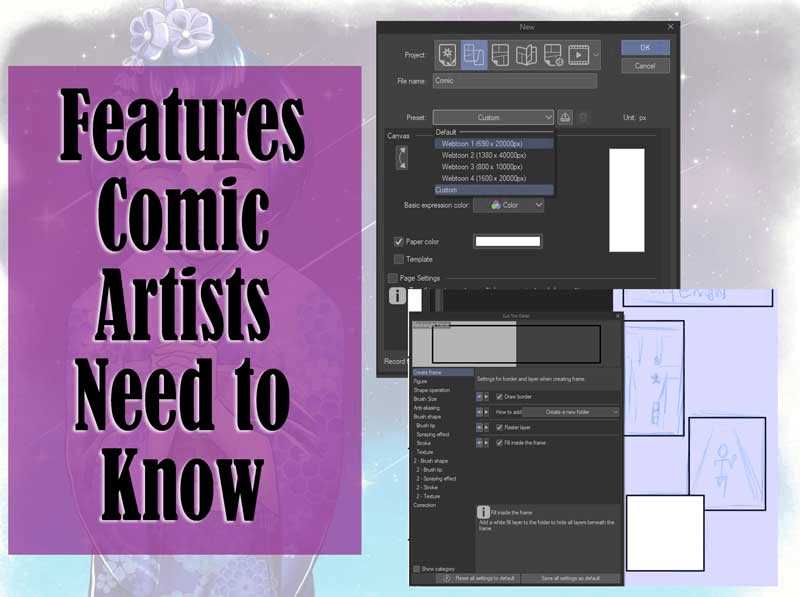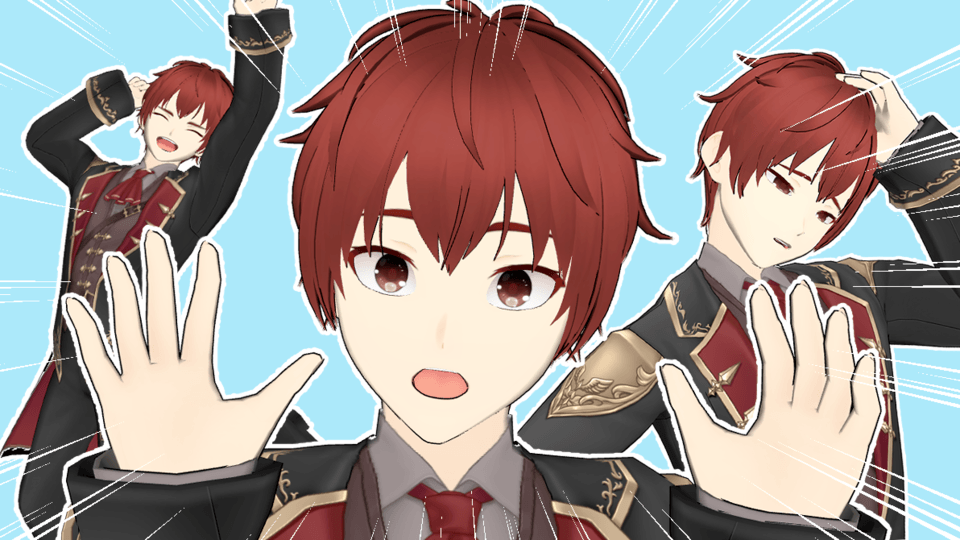Basic guide to drawing characters of different ages!
Hello hello! My name is Stefani and I want to share a little guide on how to draw characters of different ages, they are little tips that have helped me over time and I hope you like it <3
You can continue reading the tutorial but I also recommend watching the video, since it is more complete:
I. Body Proportion ✿
The proportion of a human body is ideally 8 heads, these guiding us by Leonardo da Vinci's vitruvian man
These proportions, however, vary according to age, the younger a character is, the fewer heads it is composed of.
This ratio guide below is based on "Ideal Proportions at Various Age" by Andrew Loomis from his book For All It's Worth (1943).
Something important to keep in mind is that with age the heads lose their softness and roundness to get longer, so the heads of children and babies are more rounded and look softer than those of adults. In addition, they do not have the same size, the head grows over the years, just like the rest of the body.
Going back to proportions, what happens when people enter beyond adulthood? Are they the same height? NOP and this is due to the wear of the bones, from the age of 50 humans begin to lose height, this in a very subtle way, it begins to become more evident from the age of 60-70. From these ages the human tends to stoop so the change in height is even more noticeable.
You can use the 3D models as a reference, as they are customizable you can adapt it to the proportions you need.
There is also this material in which the 3D models already come with the proportions adapted according to age:
Starting from this information we can play and exaggerate the attributes that we want to make the character more appealing.
II.Babies and children ✿
Babies and very young children are usually chubby so to make them look that way we are going to draw small folds of fat on their body, mainly in these areas
We are going to use many curved lines, no straight lines or sharp points, all in favor of giving that sensation of softness, the softer the more tender the children will be.
Children have rounder heads than adults and an important characteristic is having large, rosy cheeks.
Remember that depending on the age of the child he will have more or less hair, we are not going to give a baby a mega mane because it would not make much sense.
As the characters continue to grow, the number of heads that comprise it continues to increase.
III. Teens and Adults ✿
In childhood, bodies are quite androgynous, but with the arrival of preadolescence and adolescence, other aspects besides height and proportion change. In female bodies, the hips widen and the bust grows. In the case of boys, the shoulders widen as well as the back.
As we already know, faces lose roundness and begin to notice more defined features.
Making the body is simple, just remember the proportions and you'll be fine.
Being adults, the extremities are longer and look more stylized, here we can draw the characters with rough edges, something that we had avoided in children and babies.
IV. Adults and Elderly ✿
Once the bodies reach adulthood, how can we make them look more or less young? That's when fine lines and wrinkles come into play!
We have several areas with which to work on the face:
forehead, eyes, nose, mouth, chin, between the eyebrows, cheekbones and cheeks.
By simply putting a couple of strokes in the right areas we can add age to the characters.
Levels to age your characters:
1\. Eyes, crow's feet + eye bags (subtle) and the furrows of the mouth.
2\. The wrinkles that we put previously are marked more, we can place subtle wrinkles on the forehead, chin and neck.
3\. The previous wrinkles are marked more and we also add wrinkles on the lips and chin. But not only that! skin with age begins to sag and become thinner,
so the skin of the cheeks is falling, the chin in turn looks more rounded and the head in general looks less elongated and rounder.
Ears and noses continue to grow over the years, which is why older people have large ears and noses.
In the rest of the body you can also see that the skin is falling and looks flaccid.
The neck begins to show wrinkles, and jowls begin to form. Wrinkles create volume in the skin, don't forget that by making your character at angles where they are visible add that detail.
Remember that the body is smaller than that of adults and they slouch when they are very old.
V. Extra 1- Hands ✿
Apart from the face, it seems to me that in the hands the age of the characters can be seen very easily, in the case of babies they are chubby and short fingers, the knuckles are usually noticeable although very little
As the character grows, the fingers lengthen and become more stylized, in the hands we can see how the knuckles are marked more obviously.
When we draw hands of older people we will take into account much more elements: veins, bones, knuckles and joint between bones.
We mark the veins completely, we only select some and make the contours, in the joints of the bones we will create more wrinkles and make the area wider.
For a deeper explanation you can check the video tutorial.
In the palm of the hand, to denote the age of the characters, it is simply to create more folds in the volumes of the palm, and as in the previous explanation, in the joints of the bones, create more wrinkles and make the area wider, do not forget to highlight the area of the wrist + forearm that is marked in yellow.
SAW. Extra 2- Hair ✿
The hair says a lot about the age of the characters, the appearance of gray hair is an element that symbolizes aging, these normally begin to appear between 35 and 40 years old, first in the hundreds zone and then it spreads throughout the years. length of all hair.
Hair loss is also a symbol of aging, mainly in men, the hair begins to fall out in sections, the hair falls out from the top of the head.
1. Tickets.
2. Area where hair is lost.
3. Crown.
It begins at the entrance of the head, then in the area of the crown, hair begins to lose, little by little it worsens until the top of the head is left without hair, as you can see in the example:
VII. END ✿
And ready! That has been all for this tutorial, thanks for watching and/or reading it, I hope it has helped you, remember that practicing is the key, see you in the next tutorial! bye!
























Comment